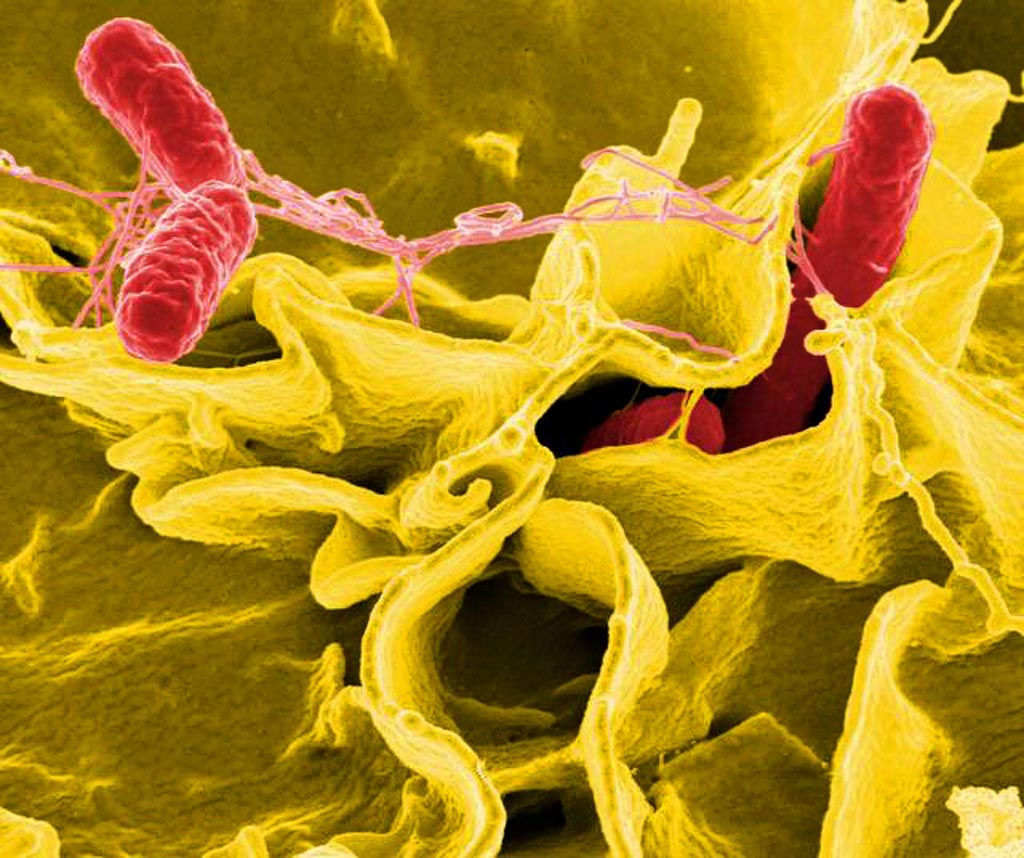Genetic Variant Links Typhoid Susceptibility to Cholesterol Level
By LabMedica International staff writers
Posted on 06 Sep 2017
A team of molecular microbiologists has linked genetically controlled levels of cellular cholesterol to susceptibility of invasion by Salmonella enterica serovar Typhi (S. Typhi), the bacterium that causes typhoid fever.Posted on 06 Sep 2017
Risk, severity, and outcome of infection depend on the interplay of pathogen virulence and host susceptibility. Systematic identification of genetic susceptibility to infection is being undertaken through genome-wide association studies, but how to progress from identification of genetic differences to functional mechanisms is unclear.

Image: Digitally colorized scanning electron microscopic image showing Salmonella Typhi bacteria (red) invading an immune cell (yellow) (Photo courtesy of the CDC Public Health Image Library).
In this regard, investigators at Duke University (Durham, NC, USA) carried out a genome-wide association study to identify genetic differences that correlated with the susceptibility of cell lines generated from hundreds of different individuals to S. Typhi invasion.
The investigators reported in the August 21, 2017, online edition of the journal Proceedings of the [U.S] National Academy of Sciences that a single-nucleotide polymorphism (SNP) in the VAC14 gene was associated with susceptibility to S. Typhi invasion. Cells with mutated VAC14 that did not code for the normal protein product displayed increased S. Typhi docking due to higher plasma membrane cholesterol levels. The same SNP was then found to be associated in a Vietnamese population with increased risk of contracting typhoid fever.
In addition, the investigators showed that treating zebrafish with the cholesterol-lowering agent, ezetimibe, reduced susceptibility to S. Typhi. Ezetimibe inhibits the absorption of cholesterol from the small intestine and decreases the amount of cholesterol normally available to liver cells, leading them to absorb more from circulation and thus lowering levels of circulating cholesterol.
"Discovering the mechanism was important because plenty of people are on cholesterol-lowering drugs, especially statins for high cholesterol," said senior author Dr. Dennis C. Ko, assistant professor of molecular genetics and microbiology at Duke University. "We wondered if similar drugs could be given to reduce the risk of Salmonella infection."
Related Links:
Duke University













